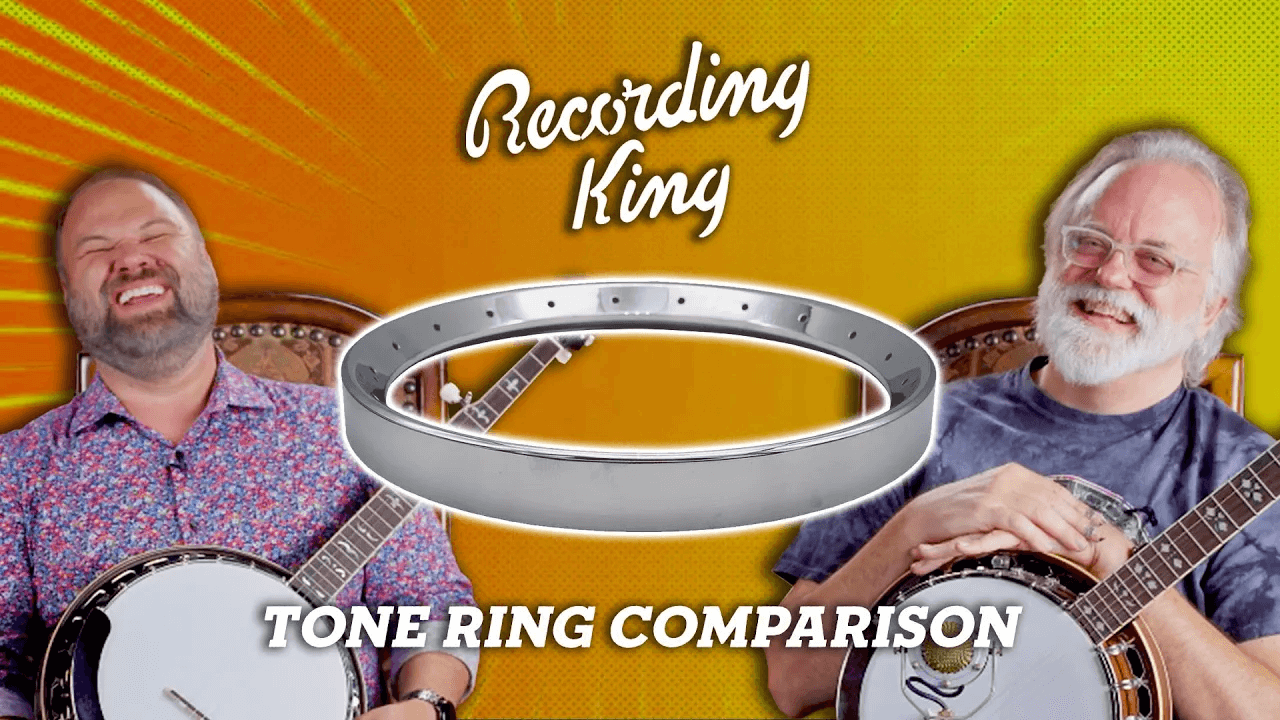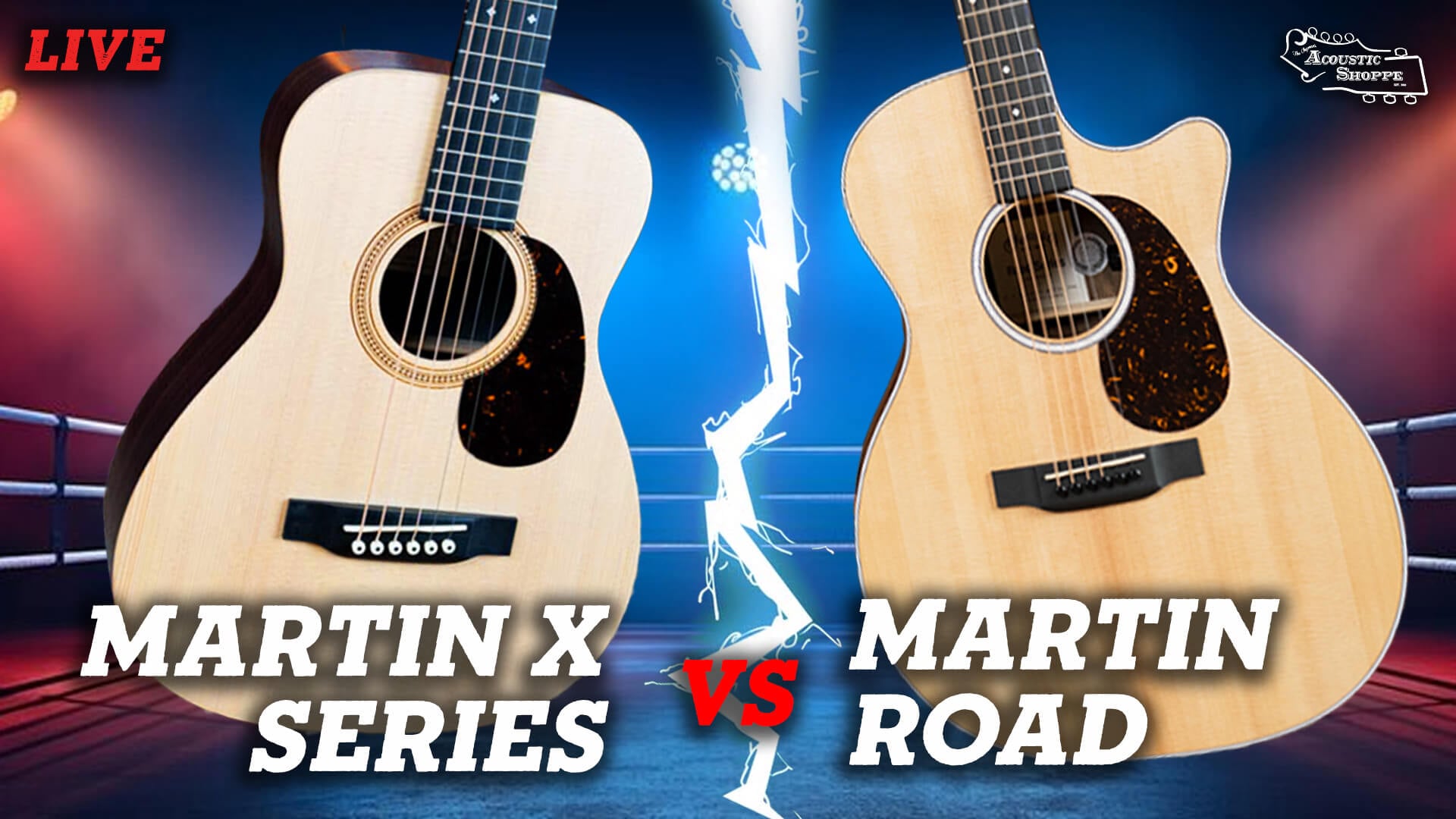Rolled vs Cast Tone Rings: A Banjo Player’s Guide to Better Tone
When it comes to dialing in the perfect banjo sound, few components make as much of an impact as the tone ring. In this breakdown of rolled vs cast tone rings, we’re going to help you understand exactly how these two types of tone rings differ—both in construction and sound—and help you choose which one is right for your playing style and musical goals.
At The Acoustic Shoppe, we invited clawhammer banjo master and educator Jim Pankey to join John Chapman for a hands-on comparison of two Recording King banjos: the RK-R20 Songster, featuring a rolled brass tone ring, and the RK-R35 Madison, equipped with a full cast brass tone ring. Both are powerful instruments in their own right, but they cater to very different types of players.
This blog dives deep into the mechanics, feel, and sound of both designs to answer the big question: when it comes to rolled vs cast tone rings, which one truly delivers the better banjo tone?
What Is a Tone Ring, and Why Does It Matter?
A tone ring is a metal ring that sits between the banjo head and the wood rim. It acts as a bridge between vibration and projection, playing a critical role in how much volume, sustain, and clarity your banjo produces. The material, weight, and shape of a tone ring all influence how your banjo will respond to your picking hand.
There are several types of tone rings used across various banjo models, but in this comparison, we’re focused on two of the most common—and debated—styles: rolled vs cast tone rings. While both serve the same basic function, the difference in their manufacturing and weight leads to vastly different tonal results.
Rolled Tone Rings: Lightweight & Bright
Rolled tone rings are typically made from a brass rod that’s bent into a circle and fitted on top of the wood rim. These rings are lighter, simpler in design, and more cost-effective. On the Recording King RK-R20 Songster, this style contributes to a banjo that is easy to handle and well-suited for beginners or those who prefer a lighter instrument.
Sound-wise, rolled tone rings tend to produce a brighter, snappier tone with quicker decay. They don’t sustain as long as cast tone rings, but they excel in situations where clarity and a more percussive attack are desirable—particularly in old-time or clawhammer playing styles.
Cast Tone Rings: Heavier & More Powerful
Cast tone rings, like the one found in the RK-R35 Madison, are precisely molded and machined from a solid piece of brass or bronze. This gives them significantly more mass, which translates into increased sustain, volume, and warmth. The added weight also contributes to a more powerful projection, making these ideal for bluegrass pickers who need their banjo to cut through a band mix.
Jim Pankey points out in the video that the RK-R35 has a much deeper, throatier tone compared to the RK-R20. You’ll hear a rounder low end, a smoother top end, and an overall fullness that really shines when you're playing in ensemble settings or recording.
Side-by-Side Banjo Comparison
To give players a better sense of how these tone rings affect real-world performance, Jim Pankey demonstrates both banjos in a series of controlled playing examples. While tone preference is subjective, the audio reveals some clear differences.
Here’s how the two stack up:
Recording King RK-R20 Songster (Rolled Tone Ring)
Lightweight and more affordable
Produces a crisp, articulate tone
Great for beginners or clawhammer players
Easier to hold for long practice sessions
Recording King RK-R35 Madison (Cast Tone Ring)
Heavier and more resonant
Offers more depth, sustain, and projection
Better suited for bluegrass and ensemble work
Built for intermediate to advanced players seeking professional tone
Construction and Components Overview
While the tone ring is a major factor in sound, the rest of the build also influences the overall feel and response of a banjo. Both of these Recording King models feature mahogany resonators, which contribute warmth and focus to the tone, but their necks and materials differ slightly.
The RK-R35 Madison features a maple neck and a padauk fingerboard, with planetary tuners and classic ivoroid binding that enhance its vintage appeal. Its full-size cast brass tone ring is supported by a three-ply maple rim, providing the rich sustain you hear in the demos.
The RK-R20 Songster uses a mahogany neck and a Revebond fingerboard, which is a synthetic alternative to rosewood. While it lacks some of the detailed appointments found on the Madison, it’s built to a high standard and offers a consistent, player-friendly experience at a more accessible price point.
Which Tone Ring Is Right for You?
Choosing between rolled vs cast tone rings depends entirely on your playing needs, tonal preference, and budget. Here’s a quick guide to help steer your decision:
Choose a rolled tone ring (RK-R20) if:
You’re a beginner or learning player
You prefer old-time, clawhammer, or solo banjo
You want a lightweight instrument for extended play
Budget is a primary concern
Choose a cast tone ring (RK-R35) if:
You play in a bluegrass or band setting
You want more sustain, volume, and tonal depth
You’re an advancing player ready for a long-term instrument
You enjoy the weight and feel of a traditional resonator banjo
Conclusion: Tone Comes Down to Taste—and Purpose
In the battle of rolled vs cast tone rings, there’s no absolute winner. Each has a unique voice and role to play in the world of banjo music. The RK-R20 Songster is the perfect entry-level banjo for someone exploring traditional or old-time styles, while the RK-R35 Madison brings pro-level power and tone that can hang with the best on stage or in the studio.
As Jim Pankey demonstrates, you can make great music on either—what matters most is matching the right tool to your musical goals.
Still unsure which banjo is right for you? Contact our team at The Acoustic Shoppe, where we match players with the perfect instruments every day. And don’t forget, our Dread-Not Guarantee gives you up to a year to ensure your new banjo is the one you’ll love for a lifetime.













